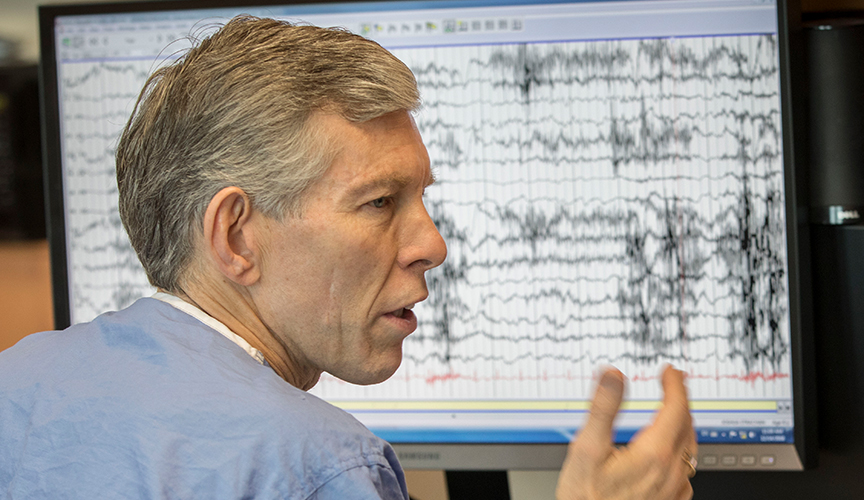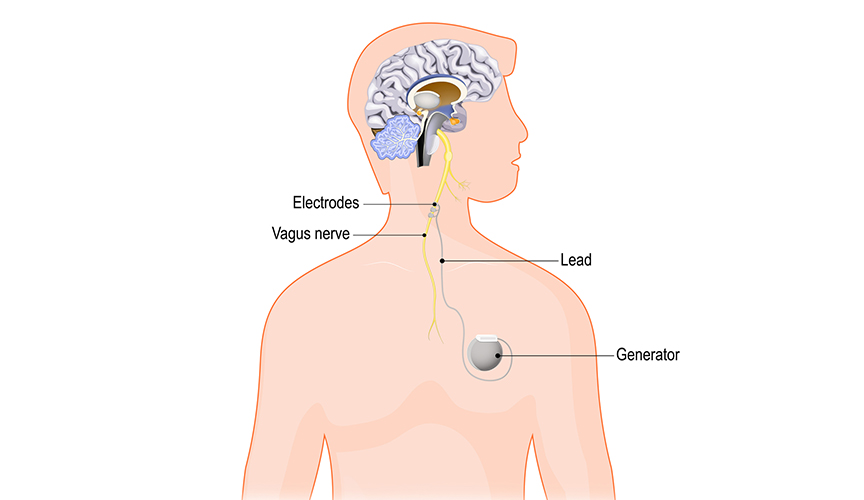Vagus nerve stimulation (VNS therapy) is one of several treatments available when epilepsy does not respond to medications. In the last two decades, Le Bonheur Neuroscience Institute Co-director James Wheless, MD, has been part of extensive research examining the safety and effectiveness of the vagus nerve stimulation (VNS) device in young children helping bring this device to children younger than 12 years.

How does vagus nerve stimulation (VNS) work?
A small device implanted beneath the skin of the chest, VNS has a wire that attaches to the vagus nerve in the neck, via an electrode. The device sends regular, mild pulses of electricity to the brain through the vagus nerve to prevent seizures from occurring. Vagus nerve stimulation (VNS) is often referred to as the pacemaker of the brain.
The device is programmed in an outpatient setting, and generally patients are not aware when the device is functioning. One of the benefits of the device is that if a person is aware a seizure is occurring, they can deliver an extra dose of stimulation to the brain with a magnet, which may help stop or shorten a seizure.

Who is eligible for vagus nerve stimulation (VNS)?
- Children 4 years and older
- Seizures are usually focal or partial seizures, although other seizure types may also be improved
- Seizures have not responded to medication
- Cases where epilepsy surgery is not effective or not an option




